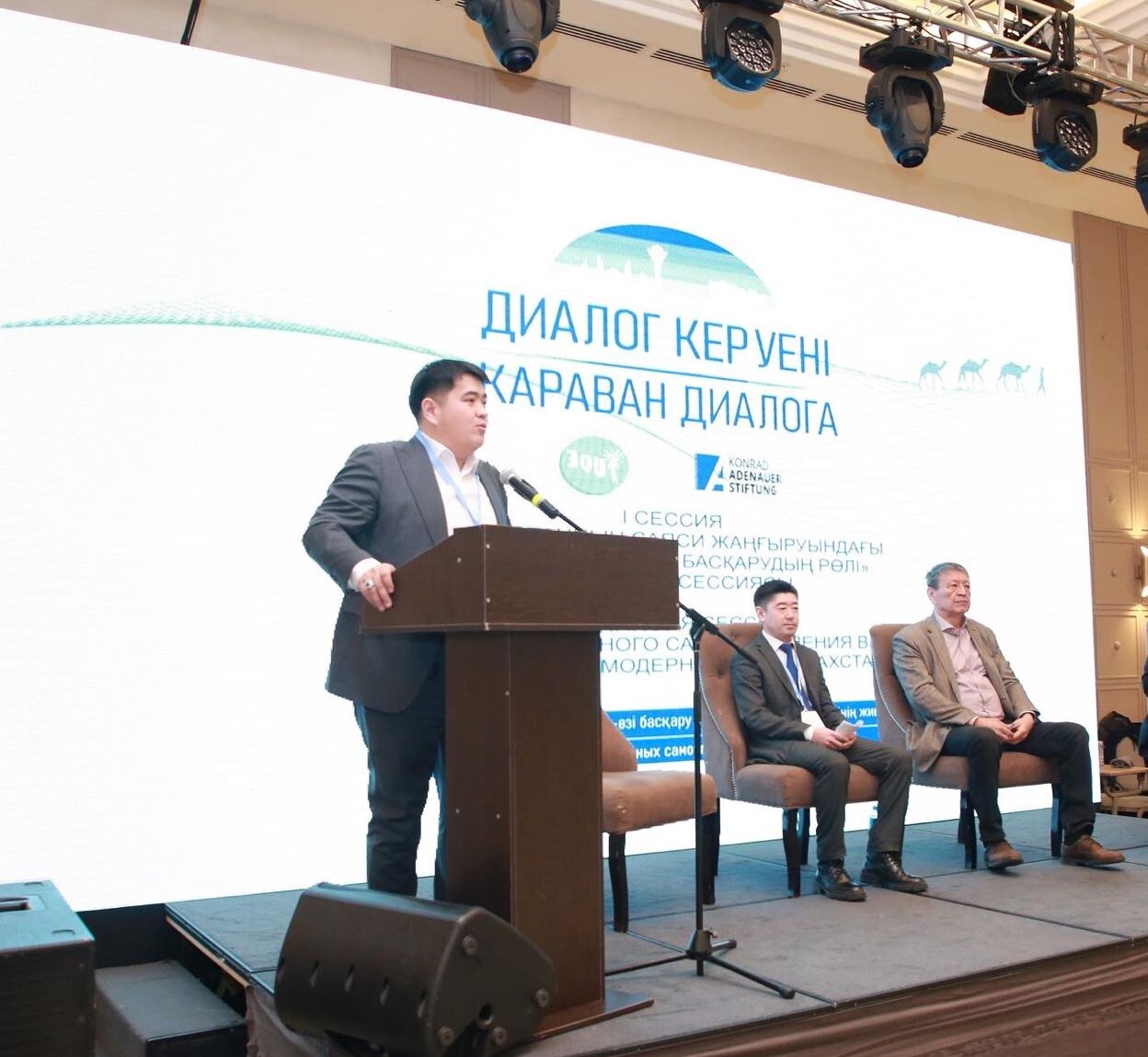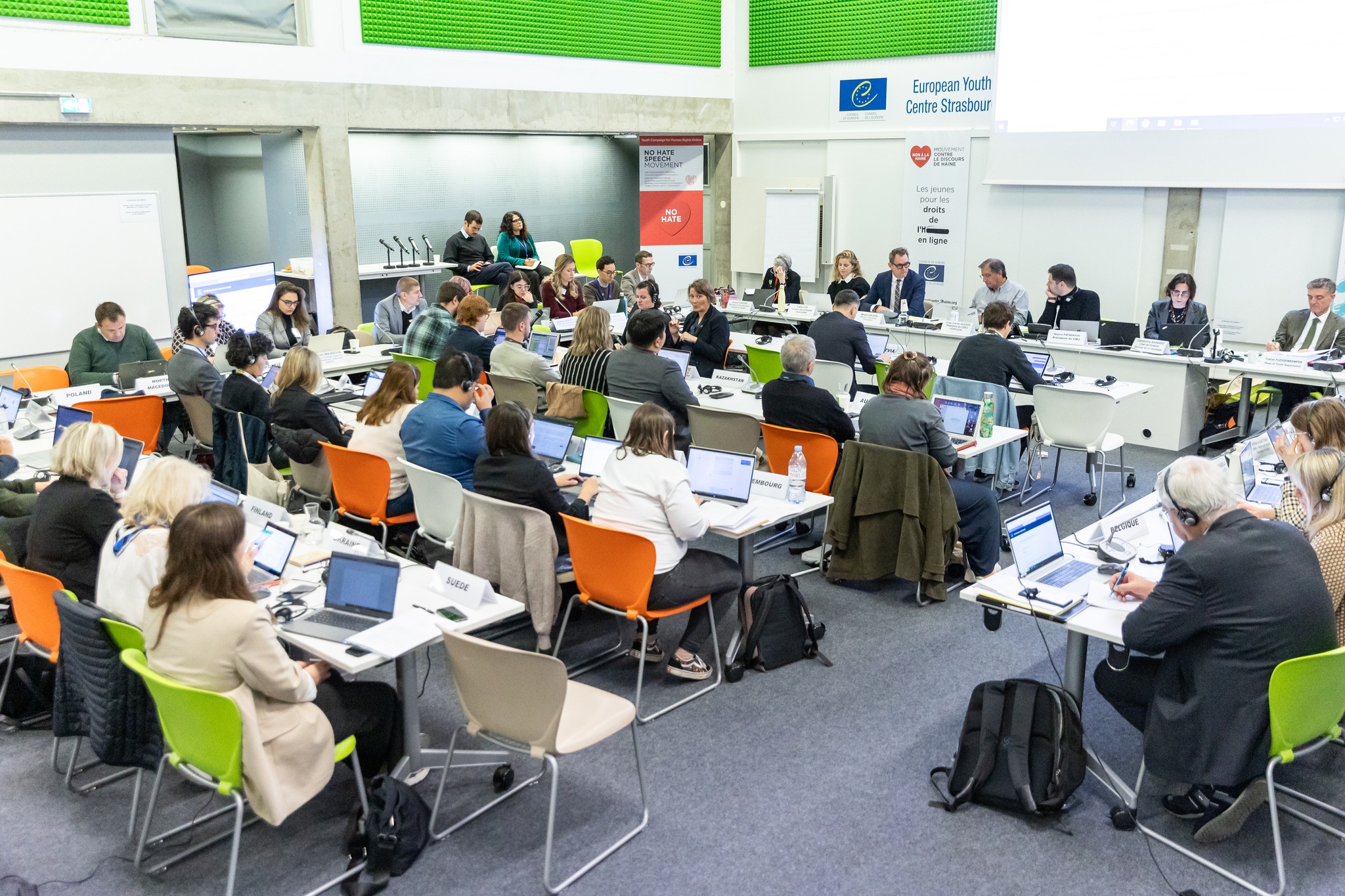ASTANA – The transformative power of youth-led initiatives continues to reshape state governance in Kazakhstan, breaking policy-related barriers and driving changes. In an interview with The Astana Times, political expert Valikhan Bakhretdinov elaborated on the youth policy in Kazakhstan and Central Asia, and the outcomes of interregional cooperation so far.

Valikhan Bakhretdinov.
Bakhretdinov is the head of the Great Steppe public association. Since 2015, it stimulates the building of a strong civil society with particular focus on the youth involvement in state decision-making.
The organization gathers local activists nationwide to raise the role of local self-governance in Kazakhstan’s political modernization. As a case in point, its first Caravan of Dialogue forum in Turkistan last December, supported by the Konrad Adenauer Foundation, addressed the need to promote self-governance in public schools and universities.
It is noteworthy that Kazakhstan is a predominantly young nation – the youth comprise 30% of the total population and the average age of a Kazakh citizen is 32 years.
Youth participation in Kazakhstan’s modernization
For Bakhretdinov, youth engagement in governance demonstrated a visible progress in recent years.

Photo credit: Bakhretdinov’s LinkedIn.
The regular support provided by President of Kazakhstan Kassym-Jomart Tokayev, in his opinion, laid the foundation for its promotion.
“The introduction of the 30% quota for youth and women in the Kazakh Parliament and local self-governance bodies along with the direct elections of the akims (mayors) of districts and small cities push youth forward to engage in politics,” he said.
Bakhretdinov added that the increase in the number of youth candidates in party lists during the last two parliamentary elections proved the effectiveness of the reforms. “The country is developing its political culture and the governance system,” he noted.
Speaking about the Presidential Youth Personnel Reserve, a mechanism for creating a transparent and effective social elevator for talented youth in Kazakhstan, the expert said that “it helps to attract young professionals to the high-ranking civil service positions.”
“The program opens the door to many mid-career experts, preserving our economy and society from the brain drain,” he said.
In his early career, Bakhretdinov worked as a volunteer. “It was quite difficult to interact with local executives, as most of them were unaware of the needs of youth and contemporary tendencies.”
As for today, he observes significant changes in this regard.
“Ten years ago, volunteers were mostly perceived as a crowd for official events. Youth activists now have more rights and privileges both provided by the government officials and society,” Bakhretdinov said.
Kazakhstan has established a raft of specific institutions for the promotion of youth policy, for instance, the youth wing of the Assembly of People of Kazakhstan (APK), National Volunteer Network, or the Diplomatic Academy under the Kazakh Foreign Ministry. According to the expert, all of these structures do their best to motivate Kazakh young people.
Central Asian youth cooperation
“In recent years, Central Asian youth cooperation has been significantly developed. It demonstrated the readiness of the regional actors for collaboration. Well-established platforms continue to strengthen interaction between the youth and governments,” said Bakhretdinov.

Caravan of Dialogue forum in Turkistan in December last year. Photo credit: Bakhretdinov’s LinkedIn.
Annual Consultative Meetings of the heads of Central Asian states, for example, framed an effective environment for regional cooperation with a youth-focused approach.
As part of the fifth meeting in the Tajik city of Dushanbe this September, Central Asian leaders signed the agreement on the general directions of the state youth policy in the region.
“It created a legal basis for the further youth cooperation in the years to come, facilitating structured permanent dialogue,” he said.
Central Asian youth collaboration with the third countries, the expert emphasized, signifies the willingness to accomplish a common purpose.
“It is mainly aimed to increase the participation of young people from Central Asia in the international youth movement and the resolution of global challenges,” said Bakhretdinov.
He brought the examples of the European Union (EU)-Central Asia Civil Society Forum, Russia-Central Asia Young Leaders Forum, India-Central Asia Youth Forum, and Youth Forum of Central Asia and China.
The latter was held in Turkmenistan for the first time this November – the New Era of the Great Silk Road three-day forum was followed by the Youth Festival of Culture and Arts and presentation of the Youth Award.
“Regional interests are also well presented in the activities of multilateral platforms, which highlight the need to foster youth cooperation and confirm the unity of the Central Asian region and its importance on the agenda,” he said. For instance, the Shanghai Cooperation Organization (SCO) Youth Forum, the Conference on Interaction and Confidence Building Measures in Asia (CICA) Youth Council, or the Commonwealth of Independent States (CIS) Council on Youth Affairs.
Kazakh-European youth affairs
A month ago, Kazakhstan took part in the 49th meeting of the European Steering Committee for Youth (CDEJ) in Strasbourg. It was the first time for the Central Asian country to participate in its work.

The 49th meeting of the European Steering Committee for Youth (CDEJ) in Strasbourg.Photo credit: the Joint Council on Youth (CMJ) Facebook page.
The CDEJ establishes the priorities and objectives for the youth sector. The platform was set up by the Committee of Ministers, the statutory decision-making body of the Council of Europe.
“The goal is to stimulate cooperation between the governments of the state parties under the European Cultural Convention, to develop youth policies based on the standards of the Council of Europe, thereby ensuring the participation of young people in decision-making and their access to rights,” said Bakhretdinov.
Kazakhstan joined the European Cultural Convention in 2010. This membership, in his opinion, is crucial for bridging the regions.
“The main purpose of my participation [in the CDEJ meeting] was to represent Kazakhstan’s youth on one of the most decisive international platforms of Europe,” he said.
Participation in the CDEJ’s work, he said, expands opportunities for the younger generation, considering the potential of cooperation with partners of the Council of Europe and involvement in the youth programs supported by the European Youth Foundation (EYF) and European Youth Centres (EYCs) in Strasbourg and Budapest.
The expert suggested to attract civil society actors to the work to support shared principles towards the reinforcement of political participation of youth and to highlight the focus on the rule of law and universal human rights.
On top of that, Bakhretdinov was unanimously elected to the CDEJ Bureau during the October session. It is also the first time the CDEJ management board includes a representative from Kazakhstan.
The promotion of national identity by younger generation
Sharing his ideas on the relevance of the promotion of national identity by the younger generation, Bakhretdinov said that “Kazakh youth should be given freedom of choice to identify their own values.”

Photo credit: the Joint Council on Youth (CMJ) Facebook page.
In his perspective, every generation has its own views and principles. He added that the older generation should avoid the obtrusion of its opinion in modern times.
“For me, national identity, which makes me Kazakh, is a mixture of values – from the sense of freedom and dignity to the sounds of the steppe, wind, and the dombyra [Kazakh musical instrument]. Young people should be given space to form their own understanding of national identity, which will lead them for the rest of life,” he said.
During the years of independence, Kazakhstan’s population grew by 22.3%. In alignment with the government’s goal to improve the youth policy, Kazakhstan step-by-step carries out measures aimed to expand educational opportunities for young people, fortify family values, and protect childhood.


